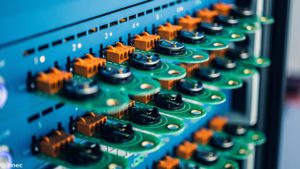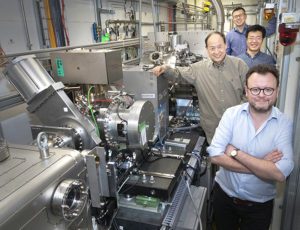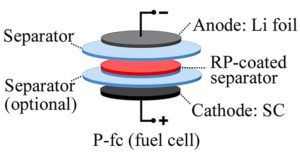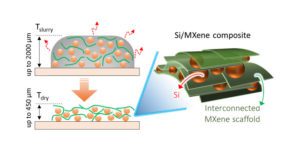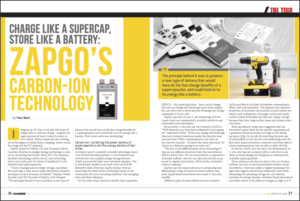Imec, a Belgian research firm focused on nanoelectronics, has unveiled a solid-state Li-metal battery cell with an energy density of 400 Wh/liter at a charging speed of 0.5C (2 hours). As part of a larger engineering roadmap for solid-state batteries, imec aims to surpass wet Li-ion battery performance and reach 1,000 Wh/L at 2-3C by… Read more »
Search Results Found For: "NANO ONE"
Intumescent battery housing improves lithium-ion battery safety
Sponsored by Pyrophobic Systems Ltd. By Dr. Sean Luo Pyrophobic Systems Ltd. has developed and commercialized an innovative intumescent battery housing LithiumPrevent™ to mitigate the risk of fire and explosion and improve the safety in the operational use, storage, logistics, manufacturing and testing of lithium (ion) batteries. Battery Fire Containment The LithiumPrevent™ battery housing is… Read more »
DOE researchers identify cause of cathode degradation in nickel-rich materials
A team of scientists that includes researchers at the DOE’s Brookhaven National Lab and SLAC National Accelerator Lab has identified the causes of degradation in nickel-rich materials for lithium-ion battery cathodes, as well as possible remedies. Researchers at Brookhaven are part of a DOE-sponsored consortium called Battery500, a group that is working to triple the… Read more »
Rice University adds red phosphorus to separators to foil dendrites
Rice University scientists have found that adding a layer of red phosphorus to separators in lithium metal batteries can signal when damaging dendrites threaten to create a short circuit. Rice University chemist James Tour made lithium metal test cells with a coat of red phosphorus on the separator, which keeps the anode and cathode electrodes… Read more »
Researchers add MXene to silicon anodes, improving charge life
Researchers at Drexel University and Trinity College have found that using silicon fortified with a special type of materials called MXene in Li-ion anodes could improve charge-to-charge life of batteries. The group reports in Nature Communications that the latest Li-ion batteries on the market are likely to extend the charge-to-charge life of phones and EVs… Read more »
KAIST research team develops stable, high-rate Li-S batteries
A research team from South Korean research university KAIST has developed stable, high-rate lithium-sulfur batteries (LSBs) by using hierarchically porous titanium nitride (h-TiN) as a sulfur host. In a paper in the journal Advanced Materials, the researchers report that h-TiN/S shows a reversible capacity of 557 mAh g-1 even after 1,000 cycles at 5 C rate with only… Read more »
Top causes of failure in power semiconductors
All electronic devices eventually die, and the failure can be quite spectacular if suitable foresight and care was not employed during the design and construction phases, especially if the device handles high power or is supplied by a large battery. It should go without saying that both conditions apply to much of the electronics inside… Read more »
Next-Battery moves a step closer to commercialization
Shanghai-based EV maker Lvchi has partnered with Next-Battery to fast-track the commercial rollout of Next-Battery’s battery technology. At its Ukraine facility, Next-Battery is producing cathode prototypes with ultra-porous metal oxides and a lithium-infused nanostructured surface. The company’s proprietary process significantly increases the surface area of the metal oxides in the cathode, which allows dimension reduction… Read more »
New silicon material improves uptake of lithium ions in anodes
Dutch firm RGS has introduced a nano-porous silicon material called E-magy that’s designed to be used in the anodes of Li-ion batteries. The company claims its material can increase battery anode capacity by up to 50%. Battery boffins have long dreamed of replacing carbon material in anodes with silicon, but in practice the amount of… Read more »
Charge like A supercap, store like a battery: ZapGo’s carbon-ion technology
Imagine an EV that could add 300 miles of range with a 5-minute charge – roughly the same amount of time it takes to refuel an ICE vehicle. Many companies are working on technologies to enable faster charging, which would be a huge win for EV adoption. ZapGo, based in Oxford, UK and Charlotte, North… Read more »




